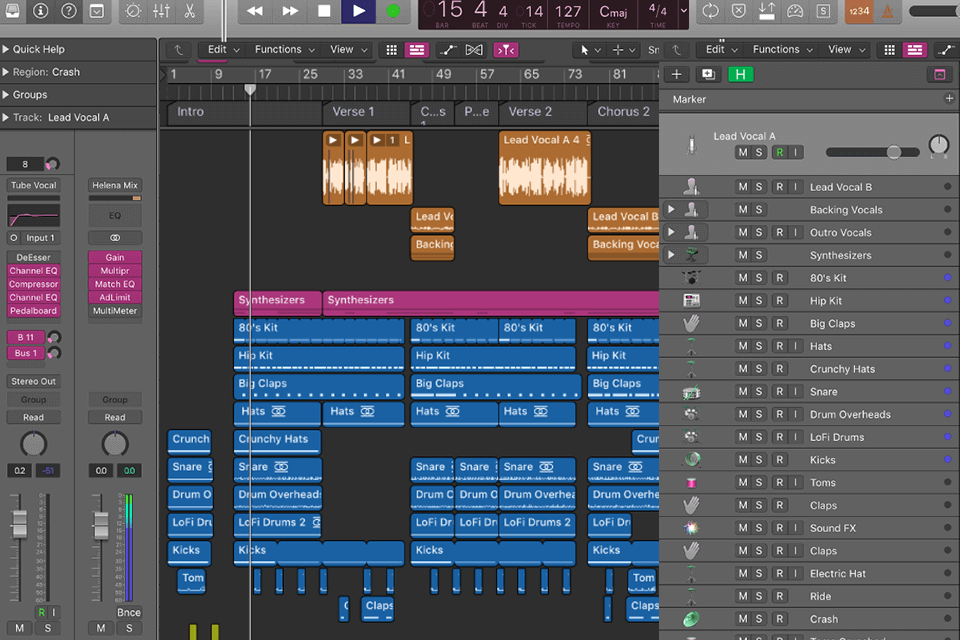Music producers play a pivotal role in the creation of a song, guiding its overall sound, direction, and impact. From the initial idea to the final polished track, a producer’s vision and expertise shape every aspect of the song. In this article, we’ll explore the key ways music producers influence the sound of a song, including arrangement, sound selection, and mixing.
1. Defining the Song’s Vision
A music producer is often the driving force behind the artistic vision of a song. Before any recording begins, the producer works closely with the artist to understand their goals and desired outcome for the track. This process involves discussing the song’s mood, genre, and style, and aligning these elements with the producer’s experience and creativity.
Establishing the Song’s Direction
Producers help refine the overall concept, ensuring that each element of the song serves its purpose. Whether it’s the genre, tempo, or lyrical themes, a producer’s role is to guide the creative process and maintain a cohesive vision from start to finish.
While music producers meticulously craft sonic landscapes, the entertainment industry offers diverse experiences. Just as producers layer tracks for perfect harmony, platforms like Jackpot Town casino deals curate gaming excitement.
Behind every hit song lies a producer’s vision, transforming raw recordings into polished masterpieces through technical expertise and creative intuition.
From selecting samples to mixing frequencies, their decisions define a track’s emotional impact and commercial viability in today’s competitive market.
Understanding these production techniques reveals why certain songs resonate across cultures and generations.
Bringing Out the Artist’s Best
Producers work to highlight the strengths of the artist, helping them achieve their best performance in the studio. This includes providing direction on vocal delivery, instrumental choices, and arrangement to ensure that the song truly reflects the artist’s identity.
2. Crafting the Song’s Arrangement
One of the most important aspects of music production is crafting the arrangement, which is how the song is structured and presented to the listener. The arrangement includes decisions about the intro, verse, chorus, bridge, and outro, as well as how these sections are connected.
Deciding on Instrumentation
Producers choose the instruments and sounds that will best support the song’s message and emotional tone. For example, a producer may decide to use a full orchestra for a cinematic ballad or electronic synths for a modern pop hit. These choices significantly impact the song’s overall atmosphere.
Creating Dynamics
The producer also determines the song’s dynamics, which refer to how the volume, intensity, and energy level change throughout the track. By adjusting the dynamics, producers can build tension, highlight key moments, and create an emotional journey for the listener.
3. Selecting and Shaping Sounds
The sounds used in a song are a huge part of its identity, and the producer is responsible for selecting and shaping them. Whether it’s choosing the right drum kit, synthesizer, or vocal effect, the producer ensures that each sound fits within the song’s framework.
Sound Design and Sampling
In some genres, producers also create custom sounds or manipulate existing samples. For example, in electronic music, producers often design their own sounds using synthesizers or sample packs, creating a unique auditory experience. In hip-hop and pop, producers may sample pieces of older songs to build new tracks.
Layering and Textures
A producer decides how to layer different sounds to add depth and texture to the song. By combining various instruments and effects, the producer can create a rich sonic landscape that engages the listener and enhances the song’s emotional impact.

4. Mixing and Balancing the Elements
Once the song has been recorded and arranged, the producer’s role shifts to mixing. Mixing is the process of adjusting the individual tracks of a song (vocals, instruments, effects) to create a balanced and polished final product.
Adjusting Levels
The producer adjusts the levels of each track so that no element overpowers the others. For instance, the vocals should be clear and prominent, while the drums and bass should provide a solid foundation without overwhelming the mix.
Applying Effects
Producers use various effects, such as reverb, delay, and EQ, to enhance the song’s sound. These effects can add depth, create space, and make certain elements stand out. The choice of effects is crucial in achieving the desired emotional and auditory impact.
Fine-Tuning the Mix
The producer ensures that every element of the song complements the others. This includes balancing the frequencies, panning instruments across the stereo field, and ensuring the song flows seamlessly from one section to the next.
5. Mastering the Track
After the mixing process, the final step in shaping a song’s sound is mastering. While the mixing engineer handles the intricacies of individual tracks, the mastering engineer focuses on the overall sound of the song, ensuring it translates well across all platforms and devices.
Enhancing the Song’s Clarity
The mastering process involves fine-tuning the EQ and adding compression to ensure the song sounds polished and clear. The producer may collaborate with the mastering engineer to ensure the song’s sound matches their original vision.
Preparing for Distribution
The producer works with the mastering engineer to ensure that the song is properly formatted for distribution across various platforms, including streaming services, radio, and physical formats like vinyl or CDs.
6. Emotional Influence and Artistic Choices
Beyond the technical aspects, a key role of the music producer is to bring out the emotional depth of the song. Producers understand how different elements of sound, arrangement, and performance can evoke specific feelings in the listener.
Telling a Story Through Sound
Producers use their expertise to enhance the storytelling aspect of the song. Whether the song is about heartbreak, celebration, or empowerment, the producer ensures that the music supports the lyrics and conveys the intended emotions.
Creating a Unique Identity
A good producer helps create a unique sonic identity for the artist. By carefully selecting sounds, arrangements, and effects, the producer can craft a distinctive sound that sets the artist apart from others in the industry.
Conclusion
Music producers are essential in shaping the sound of a song, from its initial concept to the final mastered track. Their creativity, technical expertise, and understanding of the emotional impact of music ensure that a song reaches its full potential. Whether it’s through arrangement, sound design, or mixing, the producer’s influence is felt throughout every stage of the music-making process, transforming raw ideas into a polished, market-ready song.







